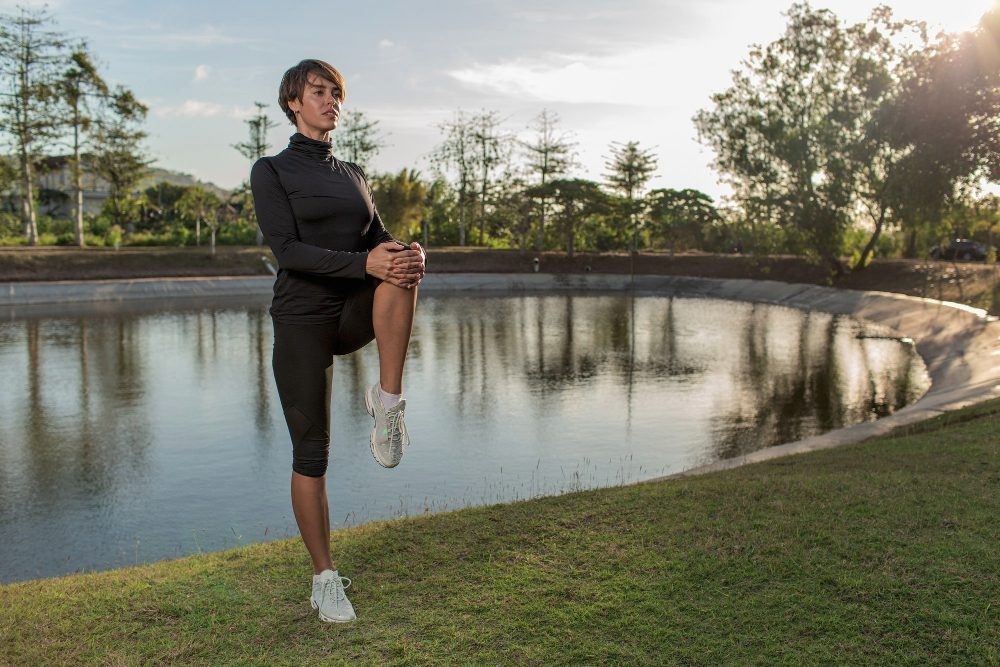

A torn meniscus is a very common knee injury. It can be debilitating and render the person immobile until it's treated or fixed.
A meniscus is a pad of cartilage in the knee, that's positioned between the tibia and femur to act as support, to absorb shock and impact, and to protect the bones from wear and tear. There are two menisci in each leg - the medial and lateral menisci. The medial meniscus sits on the inside of the knee joint and the lateral meniscus sits on the outside of the knee.
A meniscus tear is usually a result of a sudden injury. When this cartilage is torn, it will often cause pain and swelling, and sometimes a piece of the cartilage can come loose and get caught in the joint, causing it to lock up.
While meniscus tears are commonly caused by an injury, this isn't always the case. A torn meniscus can also occur as a result of degenerative changes that happen over time.
The treatment of a torn meniscus will depend on the severity of the condition. In cases where the tear is minuscule, the body may be able to repair itself. However, in more serious cases, Knee arthroscopy and surgery may be required.
Whether surgery is conducted or not - a torn meniscus should always be rested until it's healed. However, once the area has healed the patient will likely be recommended to do physio on the area - through the use of stretches and motion exercises.
Below, is a look a general look at what a meniscus tear is, and six easy rehabilitation exercises that can be done at home to encourage recovery.
People with meniscus tear may experience some, or all, of the following symptoms:





Whether Aerobic exercise is recommended for meniscal tears, will depend on the specific condition of the tear. A chronic meniscus injury will usually require complete rest, and there should be no weight-bearing on them at all.
Smaller tears may benefit from aerobic exercise, but this should only be conducted under the recommendation of a health professional. If your doctor does recommend physical therapy through aerobic exercise in order to get back a range of motion, they will likely suggest something with low impact, like swimming, cycling or water aerobics.
Pretty much all athletes run the risk of experiencing a meniscus tear at one point or another - particularly those who play a contact sport, like football and hockey.
While it's pretty much impossible to guarantee the prevention of a meniscus tear, there are some steps that people can take to help lower their likelihood of experiencing one. Below, are some useful tips that can help stop meniscus tears from occurring.
You can help to safeguard your knees against a meniscus tear by building strong muscles in the thigh region. Quadriceps, hamstrings, abductors, and adductors are all groups of muscles that are located in the thighs. Strengthening these muscles will provide support for the knee area, and lower the likelihood of a meniscus tear. There is a list of appropriate stretches and exercises above.
Flexibility improves the mobility of joints, which makes the movement of the knee joint easier, and less likely for knee injuries to occur when it is twisted or bent. Flexibility can also help the body prevent degeneration in the area, which can play a factor in causing a meniscus tear.
You can improve the flexibility in your lower body by doing stretches daily. We've listed a few appropriate stretches above.
The importance of warming up before exercising is universally known - but why is it so critical? There are a number of reasons why everyone should warm up before participating in aerobic activity. Warming up will increase the body and muscle temperature, which enhances the supply of oxygen into the muscle and allows it to increase more energy. A warm-up will also help to stabilise your knee, which can help prevent a meniscus tear.
Slowly increase aerobic exercise
When the aerobic energy exerted is much higher than usual, the muscles will be shocked, and become fatigued. You are a higher risk for injury when your muscles are fatigued. To help prevent muscles from becoming fatigued, levels of exercise should slowly be increased. For example, if you train for soccer for two hours each day, you can increase it to two hours and 20 minutes per day for a week, before increasing again. A good rule of thumb is to only increase the aerobic exercise by a maximum of 10% per week.
It's important to always listen to your body - particularly when injuries are involved. If someone experiences a very small meniscus tear, it may be able to heal on its own. However, if the tear is ignored and the person keeps exercising and putting pressure on the area, the tear may get bigger, and a piece of the cartilage may break off, and become caught in the knee, causing it to lock.
Both of these scenarios could require serious surgery and a considerable amount of recovery time. So, if you are experiencing pain in the knee area, you should have it checked by a medical professional, and ensure that it's rested and not escalated.
If you're experiencing pain in your knee, it's very important to have it checked out immediately. The knee is the biggest joint in the body, and there is a range of different injuries that can occur within it. While a meniscus can be a complicated and painful injury - and ACL is usually much more serious, and will often require surgery.
Furthermore, if a meniscus tear isn't fixed, it can cause long-term knee problems like arthritis and soft tissue damage.
So, it's very important for a professional to determine what exactly is wrong with your knee, and what the best treatment plan or rehab program is to fix it. Often a knee rehab program will need to be implemented.
A qualified podiatrist will be able to conduct a physical exam or run some tests, to determine whether you have a torn meniscus or a different condition. They'll also be able to advise you on the best way to repair and rehabilitate your condition.
Book your appointment with our podiatry team online here or call us on (07) 3356 3579.
| Monday | 7:40am - 6:00pm |
| Tuesday | 7:40am - 6:00pm |
| Wednesday | 7:40am - 6:00pm |
| Thursday |
7:40am - 6:00pm |
| Friday | TEMP CLOSED |
| Saturday | CLOSED |
| Sunday | CLOSED |
Ground Floor, 344 Queen Street,
Brisbane City QLD 4000
| Monday | 7:40am - 6:00pm |
| Tuesday | 7:40am - 6:00pm |
| Wednesday | 7:40am - 6:00pm |
| Thursday |
7:40am - 6:30pm |
| Friday | 7:40am - 5:00pm |
| Saturday | 7:40am - 4:30pm |
| Sunday | CLOSED |
Newmarket Village, 114/400 Newmarket Rd, Newmarket QLD 4051